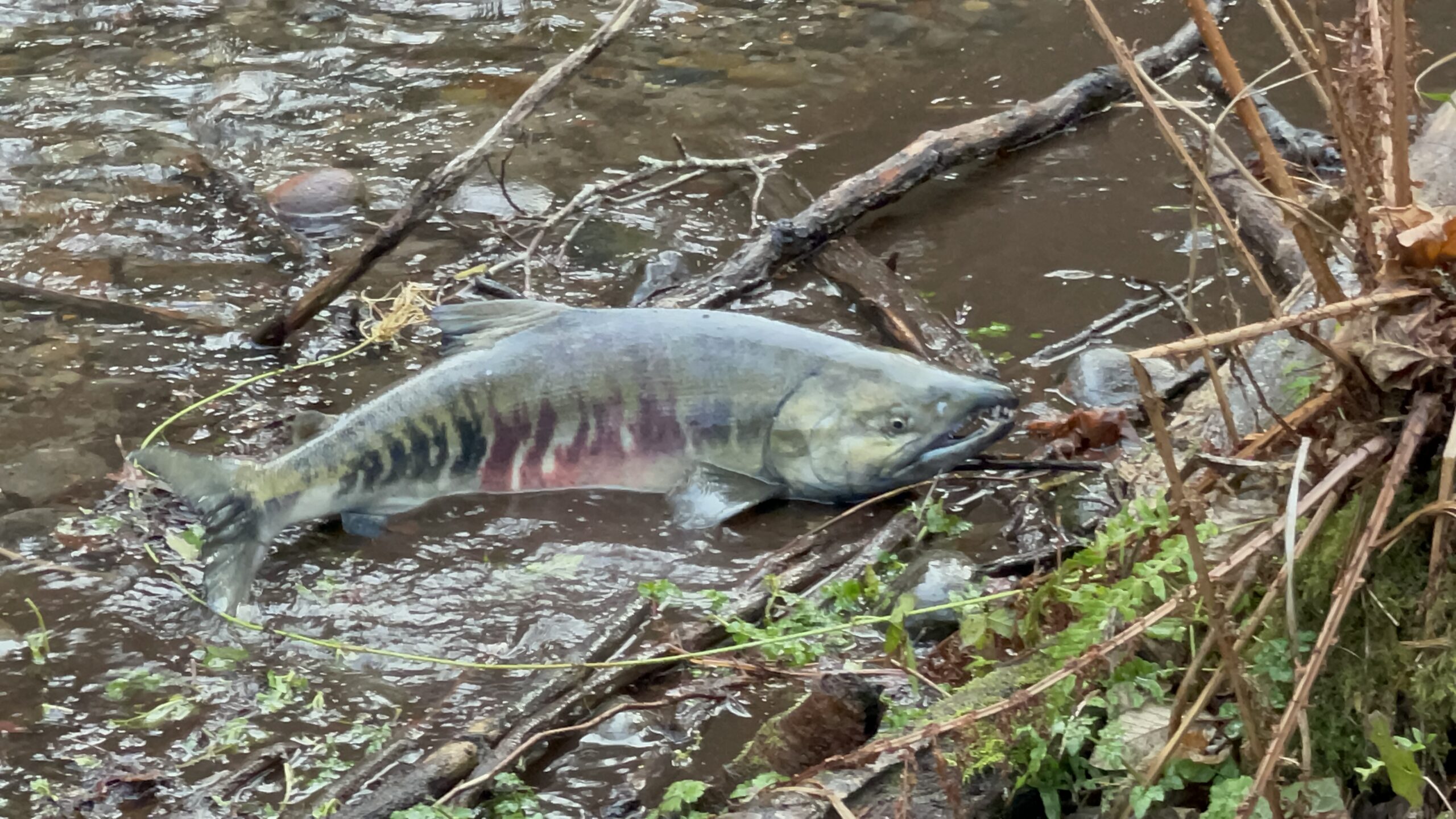January Species Spotlight
Nisqually Chum Salmon (Oncorhynchus keta)
By Heather Paladini
Each month, we will spotlight a species of fauna, flora, or fungi from within the Nisqually Watershed. Stay tuned to see what’s being spotted in the watershed each month!
This month, we cast the Species Spotlight on the Nisqually chum salmon.
The Nisqually chum salmon run in the winter. They use the lower parts of prairie streams in the Nisqually River watershed for spawning, including both Muck and Yelm creeks. Muck Creek supports four species of salmonids, with chum being the most numerous of the anadromous fish in the creek. Muck Creek is also the most significant stream for Nisqually chum, as the largest proportion of these chum spawn here. Up to one-third of the entire Nisqually River chum run use Muck Creek.
The Nisqually winter chum run is the latest-timed chum run in the Pacific Rim. While other Puget Sound chum spawn in November, the Nisqually chum spawn in late December through January. Why do these salmon run so late? What makes these chum salmon different from others?
Nisqually Chum: Unique Adaptations
These chum are thought to be genetically unique. By reacting to different environmental conditions over time, they have adapted to prairie streams including Muck Creek, and the hydrology of the river and its tributaries at this particular time of the year.
A Pierce County report on the Muck Creek Basin suggests that the chum that use Muck Creek for spawning have been influenced by its intermittent stream flow conditions. As a result, they have timed their runs to coincide with passable stream flows which happen later in the season. Adapting to the unique stream flows of this creek, which favor late-arriving fish, is a phenomenon seen in other spawning fish populations elsewhere.
This adaptation may give these chum an advantage over their fall counterparts. It enables them to avoid most of the winter floods responsible for displacing salmon eggs within the gravel or smothering them with silt. Additionally, this allows for faster incubation: the later they arrive, the warmer the water will be for the incubating eggs.
Another advantageous attribute of the chum is that half of the adult chum in any given year returning to Muck and Yelm Creeks are 3 years old and the other half are 4 years old. This makes them more resilient to unusually calamitous stream flow years, because it would only affect half the population of a brood, with the other half returning a different year.
Cultural Significance of Nisqually Chum
The late-timed chum are culturally significant to the Nisqually Tribe because they are the only fresh fish returning at a time when other salmon runs are over. Historically, the winter chum run was an entirely wild salmon run that could support a harvest. Unfortunately, the runs in recent years have been declining and are no longer large enough to support a fishing season.
NLT Protects Nisqually Chum Salmon Habitat
The Nisqually Land Trust works to protect and steward important salmon habitat lands including the lower reach of Yelm Creek, an important habitat for the Nisqually chum. The photo and video shown here were taken at Yelm Creek on the Petersen Farm. NLT has a conservation easement at Petersen Farm and works closely with the Petersen family to conserve salmon habitat for this genetically unique species of salmon.

This chum was spawning in the lower Yelm Creek a couple of weeks ago, and he gave our ED Jeanette a close-up chance to meet him. Notice his beautiful purple-red vertical markings and his well-developed teeth. These canine-like teeth may be what gave the chum their common alias dog salmon. Photo credit: Jeanette Dorner
Stay tuned for next month’s Species Spotlight!


